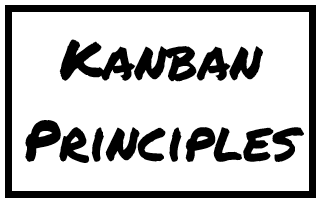
The kanban principles we use and I mention in What is Kanban? are fairly straightforward, yet often ignored in organizations who say they are doing kanban. I want to dig into a bit more depth on each of the principles, for those are are less familiar with them (or perhaps even for some that are).
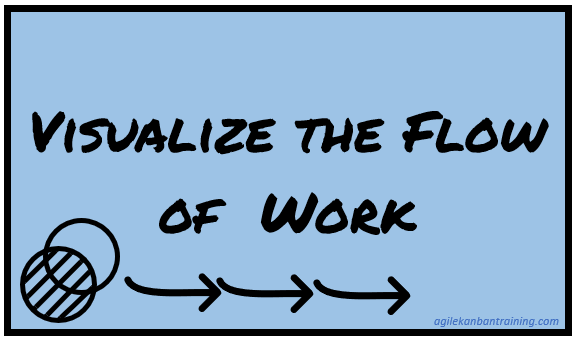 Visualize the Flow
Visualize the Flow
‘Visualizing the flow of work is about being able to see all the process steps needed to deliver your work. This is accomplished by using cards to represent work and columns to represent steps, from start to finish.
You can see what’s being worked on and where the work is in the process. The increased transparency supports focused and productive conversations about the work, helping people make good decisions of what to do next.’ – Agile with Kanban Training
People often refer to kanban as only a kanban board. This is important, but there is much more than just a few cards on a board.
 Focus on Flow
Focus on Flow
‘Focusing on flow is about observing the state of the work and determining if work is flowing well or piling up – and responding to this information.
Flow refers to steady movement of work from the time it starts until the time it finishes. By focusing on flow, you look for wastes and challenges that slow your ability to deliver value to the customer.’ – Agile with Kanban Training
When work is piling up and we can’t see the problems, they obviously can’t be addressed. Additionally, even if you feel overwhelmed, if you can’t show people what the backups and impediments are causing, you typically will not get any help to improve the situation.
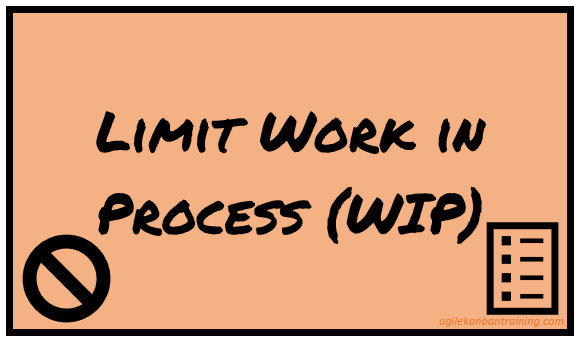 Limit Work in Process (WIP)
Limit Work in Process (WIP)
‘Work in Process, or WIP, refers to the amount of concurrent work undertaken. A WIP limit is established to allow people to focus and deliver. When limits are reached, no new work can be started – even if the active work is stuck.
When there are no limits placed on the amount of concurrent work, the people performing the work are often overburdened.’ – Agile with Kanban Training
A WIP limit functions in a similar way to a sprint in Scrum, in that it allows you to focus. Without WIP limits, you will deliver slower. This is perhaps the hardest principle for organizations to put into practice, however the simple fact is, that when we work on too many things at the same time, everything is delivered slower. There is a general fascination with having everything ‘in process’ and ‘green’ that I don’t quite understand.
We know the lead time will increase as work in process increases, yet we keep starting work instead of finishing it. “Stop starting and start finishing” is a popular term that summarizes the concept.
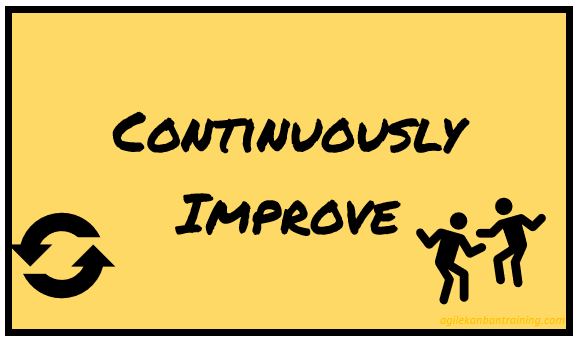 Continuously Improve
Continuously Improve
‘Continuously improving is about constantly striving to make things better. We want to focus on improving how we deliver to maximize customer service and value. This principle builds on focus on flow by identifying systemic issues and applying countermeasures to mitigate them.
Continuous improvement creates a culture of achievement, empathy, and engagement by being able to solve your own problems and those of your customer.’ – Agile with Kanban Training
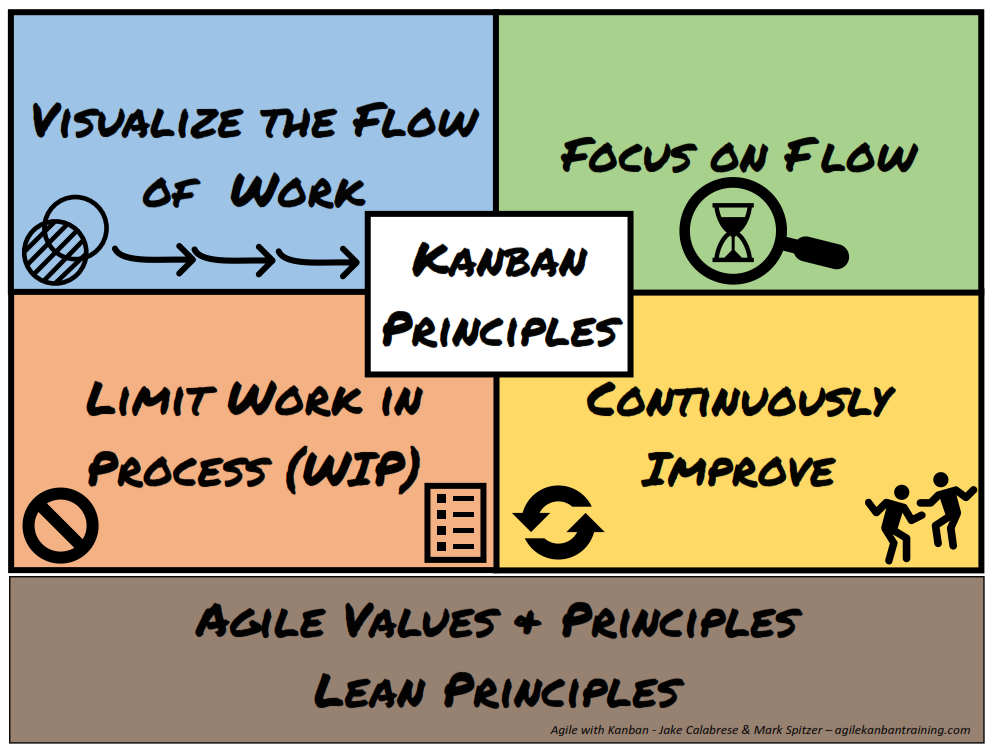
Principles and Success
These principles are straightforward, but they are not easy to accomplish. They are not easy because for them to work you need to have an environment where people can succeed. Leaders must know how to lead self-organizing teams. People need to learn how to engage to work through conflict. Everyone must believe there is a safe environment to experiment and learn. These needs are true for agile to succeed in all cases, but certainly with kanban they are critical as you continue to inspect, adapt and bring transparency to all impediments and challenges. Leaders need to help teams thrive and succeed, not direct them and YES – agile teams do need help!
Consider which of these you are doing well and which you are not. Look for ways to make the issues more transparent. The principles all work together, but look at the four and choose one to improve on, just a bit. That is the whole process… incremental improvement!
Looking for more? Check out Part 1: What is Kanban? Or Part 3: A Short History of Kanban?
Have questions? Disagree? Like what you read? Feel free to comment below!
This article is derived from an exercise used in Agile with Kanban training workshop.










